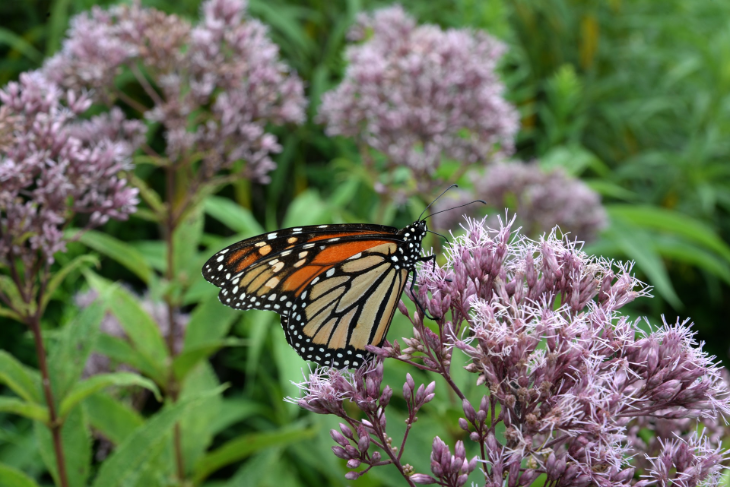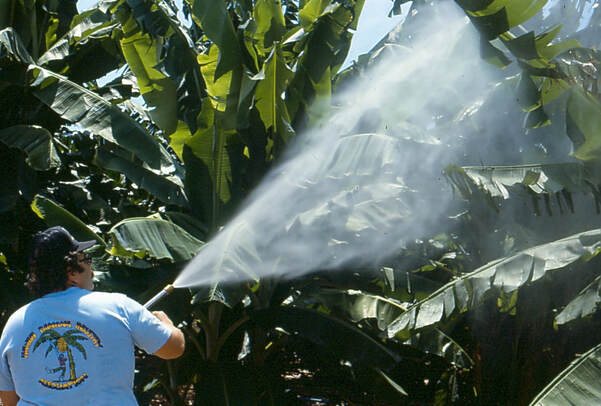|
Pesticides are a necessary tool for controlling pest insects that can transmit diseases to people and animals, attack our food, attack our homes, and cause other problems that negatively impact human health and happiness. However, it is important that when we use pesticides outdoors that we are aware of the negative impacts they can have on non-pest insects like honeybees and other pollinators. In this blog, we are going to discuss ways to get control of outdoor pests while also reducing the odds of killing helpful insects like bees! IntroductionPesticides are tools that can be used to control a wide array of pest insects. Unfortunately, helpful insects like predators and pollinators are also impacted by pesticide use. Yes, that includes ‘organic’ or ‘all natural’ pesticides, too. Most products that are labeled to broadly kill insects will kill all insects, especially after direct application (i.e., you squirt the product right onto the bug). However, there are many methods for application that can be used to target the pests you want to get rid of while preserving the safety of helpful bugs. In fact, reducing non-target effects (killing bugs you don’t want to kill) is an important goal of integrated pest management plans. Here, we list some common ways to avoid impacting non-target pollinators, specifically. Fun fact—pollinators include some bugs you might not expect, like native beetles, flies, wasps, and ants! Tips and Tricks1. APPLY PESTICIDES IN THE EVENING Most pollinators forage during the day when the temperatures are >55°F. Changing the time of spraying can make a huge difference for non-target insects. Even better—lots of pest insects are active in the evening, like many mosquito species. If you can do it, a dusk/evening application is not only less risky for pollinators than morning or mid-day, but they are also a more efficient way to target pests, too. 2. DO NOT SPRAY BLOOMS If you cannot change when you apply pesticides, you can change where you are applying them. Do your best to avoid spraying flowering plants and blooms. Most pesticidal products will have these instructions on the label. Pollinators are attracted to a wide array of blooms. Spraying elsewhere will reduce the chance that they come into contact with insecticidal products. 3. CHOOSE THE RIGHT FORMULATION The appropriate choice of formulation is another way to avoid negative non-target impacts on pollinators. Formulation refers to the active ingredient(s) (kills the pest) and inactive (all other) ingredients. Inactive ingredients are often solvents that dilute the active ingredient, and other compounds that make the product shelf-stable. Pesticides come in many different formulations. There are formulations that are less likely to kill pollinators and, when possible, these should be used where pollinators are known to be active. For instance, solutions (S) and emulsifiable concentrates (EC) dry in a short amount of time and do not leave a powdery residue like dusts (D) and wettable powders (WP). Dusty residues might impact pollinators that visit the site later, making solutions and emulsifiable concentrates a better choice for pollinator-prone environments. Granular (G) products are also a good choice for pollinator-heavy areas. Granular products are similar to dusts, but are larger in particle size so they have less risk of drifting during application. Granular products can be broadcast on the soil. They are rarely applied directly to plants and, as such, pollinators do not often make contact with them. Finally, if you are dealing with a specific pest, like ants, you could also use a bait formulation. Baits are meant to be eaten by pest insects and are typically more narrow-spectrum than other products. Pollinators are not likely to come into contact with baits as they are not attracted to them as a food source. 4. USE A LESS PERSISTENT PRODUCT Persistence refers to how long a pesticide remains active in the environment. A product with long residual activity is usually very ‘persistent’. Conversely, using pesticides that degrade rapidly, like pyrethrins, can reduce non-target mortality. A product that degrades in a few hours can be applied with relatively low risk, especially when applied when pollinators are inactive. Many tables can be accessed online which can help you decide which compounds are more/less persistent. Although these tables are often developed with honey bees in mind, they can be relevant for other pollinators as well. Many product labels also contain a “bee box” which should communicate how likely the product is to persist in the environment and pose a risk to pollinators. 5. ADJUST THE APPLICATION METHOD The method of application can also change the risk of non-target effects. Many pollinator deaths occur when a pesticide drifts from the target area into places that are attractive to or occupied by other pollinators. Spraying during windy days greatly increases the risk of drift as does using a misting system. Using granular formulations, soil treatments or application equipment that can target the spray to the intended area will keep pesticides from getting into places they shouldn’t! ConclusionsMultiple factors have contributed to the decline in pollinators including climate change, lack of forage, and parasites. Pesticide use, however, can also affect pollinator health when applications are made irresponsibly. The potentially high risks of pesticide applications to pollinators can be significantly reduced with very simple modifications like changing formulation or application time. Pollinators are a valuable agricultural resource and are ecosystem servicers that deserve our respect. However, reducing populations of pests that may make people sick is also crucial and sometimes that means using pesticides outdoors. Balancing pest control with the maintenance of the health of beneficial insects should be at the forefront of everyone’s mind when designing an outdoor pest control program. If you have more questions, here are additional resources from the Environmental Protection Agency (EPA) that may help!
0 Comments
Your comment will be posted after it is approved.
Leave a Reply. |
Bug Lessons BlogWelcome science communicators and bug nerds!
Interested in being a guest blogger?
Archives
November 2023
Categories
All
|

